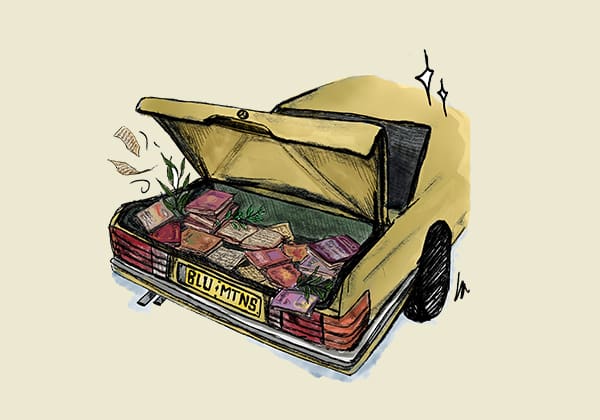On a fateful weekend before lockdown, I travelled to the misty Blue Mountains with nothing but my empty car boot and mighty aspirations to visit every secondhand bookstore I could in three jam-packed days — Amazing Race style.
You see, I have always adored secondhand books — more on this later — and after hearing tales of the bonafide bounties of Blue Mountains books, and submitting my last painstaking assignment, I was on my way.
I rolled into my first bookshop-stop, Mr Pickwick’s Fine Old Books in Katoomba, and this is where our credit-card-smashing-saga begins.
The entrance-level of this glorious establishment is a chronically kitsch antique op-shop, but as I spied a sign reading ‘more books this way,’ I discovered the lower-level is the real jackpot. Cascading down the stairs, a new literary world opens up to me; classics, fiction, poetry, science, philosophy, mystery, young-adult, and what I was really after — art history. Every shelf was used to its full potential, and the store was so chock-full that even if you managed to wrench a book off its shelf, the remaining tomes instantly reabsorbed the vacant space, like amorphous beings rolling over in their sleep.
There is something incredibly visceral about this environment, immersed in wall-to-wall books, each one a story waiting for a sympathetic reader. I found myself feeling more alive than ever, happy to be amongst the dusty air, clouded with an almond-like scent, and a sense of discovery.
On my quest to the Art History section, I found a wonderfully tattered 1972 copy of The Shock of the New by Ian Dunlop, an illustrated version of The Story of Art by E. H Gombrich from 1966, and a well-loved copy of A Painter of Our Time by John Berger from 1965.
Tiring out the slow 1980s cash register — which I admit does have some charm — I re-visit Mr. Pickwick’s three times before I leave the Mountains.
Honourable mentions in my ravenous hunt for used bookstores include Lamdah Books in Wentworth Falls, Gleebooks in Blackheath and Reader’s Heaven in Lithgow; whose owner, free of charge, threw in an utterly beaten-up copy of Charles Baudelaire’s Selected Writings on Art and Artists from 1972 that I was elated to find.
During my three day stay in the Mountains, each frost-coated morning was a joyous exploit; what books would I find? — or rather, what books would find me? Uncovering an out-of-print book, a penguin classic with a unique cover, a sneaky first edition or a book you would never find online are just a few joys of secondhand bookstores.
You see, the hidden glory of the secondhand book, and why I relish in them, is their history. Not the history of their contents per se, but the history of their ownership and the people who once relished in them too. There is a unique intimacy about this that I think is perhaps undervalued, or at least underappreciated. To me, being a part of a secondhand book’s life is to view it as an artefact with a story to tell beyond just that of the author’s choosing.
Annotations, scribblings and ever-contentious ‘dog-earing,’ are left as indexical traces of their past lives, woven into their fibrous cellulose pages. It is through these indelible marks that I feel connected to a web of owners, sometimes going back decades, whose lives I know nothing of and never will. All that remains is a name and a year scrawled under the front cover.
We, this elusive club of book owners, read the same printed words, touch the same pages, and converse with each other’s pencilled-in thoughts. These thoughts sometimes only consist of simple jeers such as “how odd” or “no, definitely not,” but other times, if you’re fortunate, a carefully crafted thought or a strategically underlined word can be the most gratifying to find.
The fading graphite words of past readers are a continual conversation with strangers who will likely never meet. I only see myself as an interim ‘minder’ of my books until the day when they (and I too) have passed on, for someone else to join in on our secret conversation.
It was Sappho who wrote, “I declare, that later on, even in an age unlike our own, someone will remember who we are,” and despite the sapphic connotations, I also like to believe she was speaking to the illustrious power and longevity of the written word.
It is in these ways, as capsules of time and tales, that books are endowed with a special kind of magic that is ever-enhanced with each successive owner.
And so, with three new mountainous stacks of books, and no space left on my shelves,
I drove home; aspirations and car boot both, fulfilled.
I would like to thank J. Jarron, G. Petrich, D. Strike, M. Ziede, A. Sutton, J. Straggon, M. Crest and K. O’grady, whom I may not know, nor ever come to know, but whose scribbles I have read and whose books I now tend.





